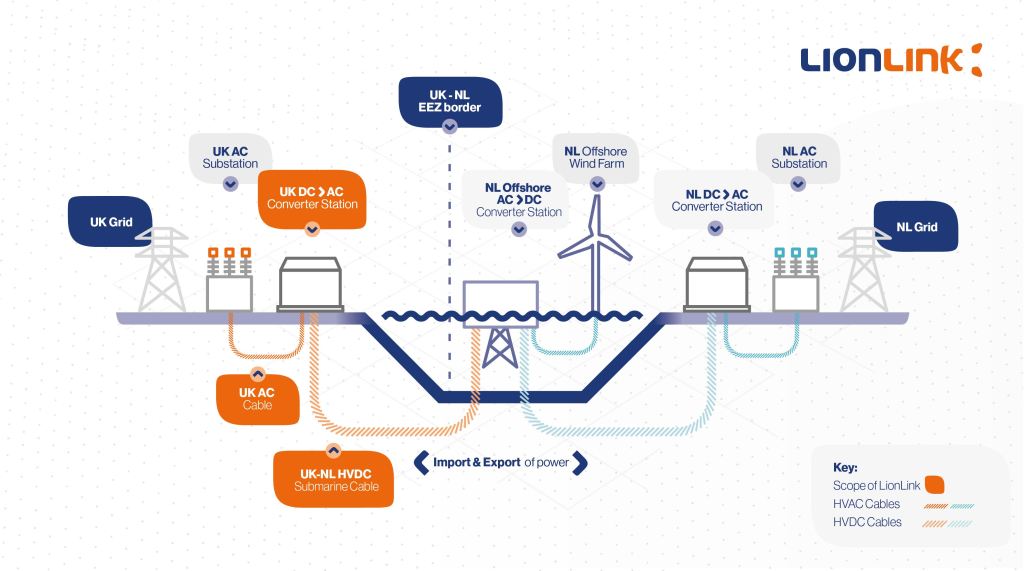
The UK and the Netherlands plan a giant interconnector project

By Anders Lorenzen
As the world continues to install more renewables like solar and wind, investing in the infrastructure to better manage such resources is becoming more important.
Because of the intermittent nature of solar and wind, energy storage, as well as grid interconnectors, are becoming a crucial element. But so far, while we have raced to add new renewable energy capacity, these infrastructure investments have been lagging behind.
Now, the two North Sea countries, the UK and the Netherlands have announced plans to build what would be the biggest cross-border electricity link that is connected to an offshore wind farm.
Connecting cross-border offshore wind
The ‘LionLink’ interconnector project would be able to transfer 1.8 gigawatts (GW) of electricity capacity to the UK from a Dutch wind farm or the same volume in the other direction. It is a multi-purpose interconnector which is designed to link offshore wind farms simultaneously to neighbouring markets via sub-sea interconnectors. Multi-purpose interconnectors will help to accelerate the delivery of offshore wind while mitigating the impact on coastal communities with fewer individual connections and reduced infrastructure.
It is being developed by UK’s National Grid and the Dutch electricity network operator TenneT. It would move enough surplus electricity between the countries to power the Dutch province of Zuid-Holland or the UK cities of Birmingham and Manchester combined. However, ministers have not yet specified the route of the cable.
In a statement, the Dutch Energy Minister, Rob Jetten said: “This new connection further boosts energy security and energy independence in Europe.” Grant Schapps, UK’s Secretary of State for Energy Security and Net Zero added that the project is “sending a strong signal to Putin’s Russia that the days of his dominance over global power markets are well and truly over.”
This project will add to the already 1GW interconnector, the BritNed link currently transferring electricity between the UK and the Netherlands.
This is part of a wider pledge by nine European governments around the North Sea to develop renewable energy in the region. The main objective is to avoid a repeat of the over-reliance on energy dependency on Russia. In addition, it is believed that between them Germany, France and Norway will develop a combined 120 GW of offshore wind capacity by 2030.